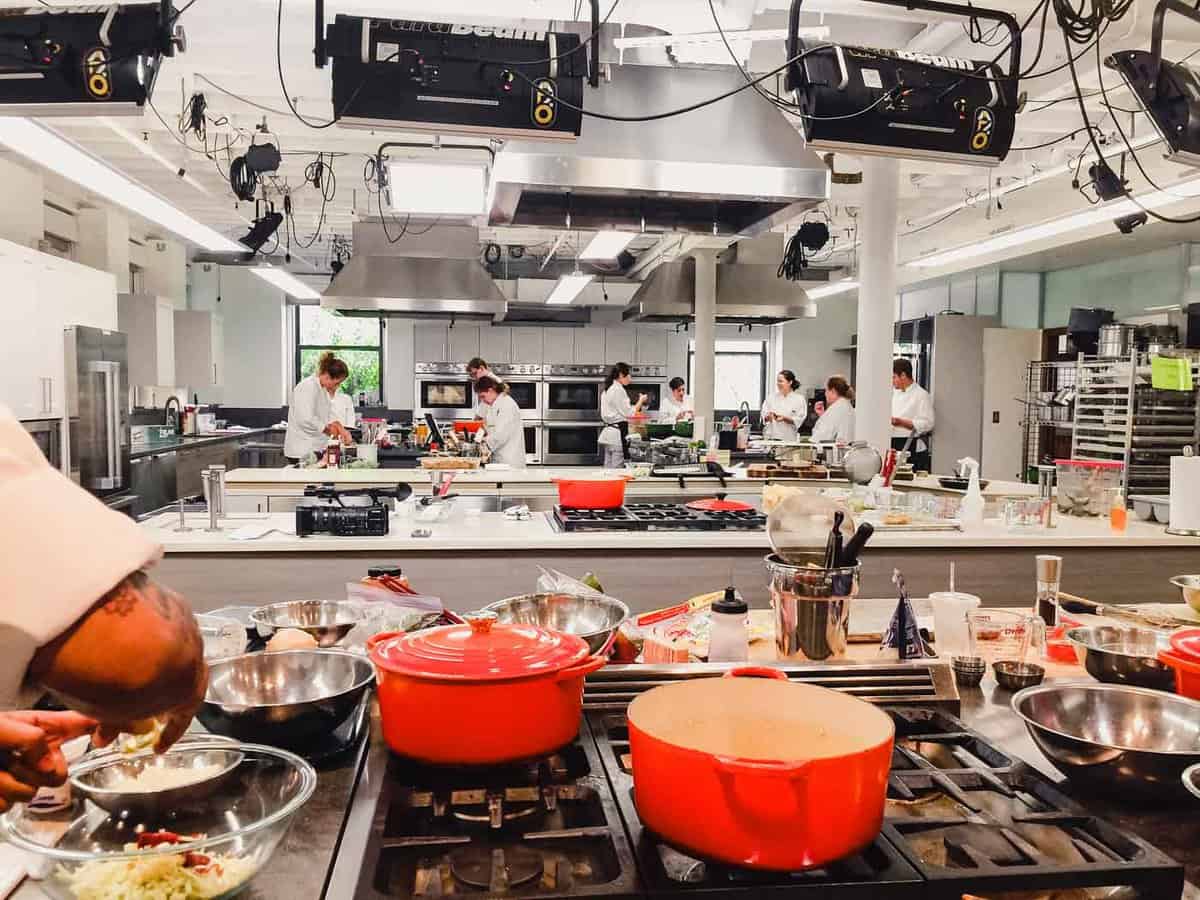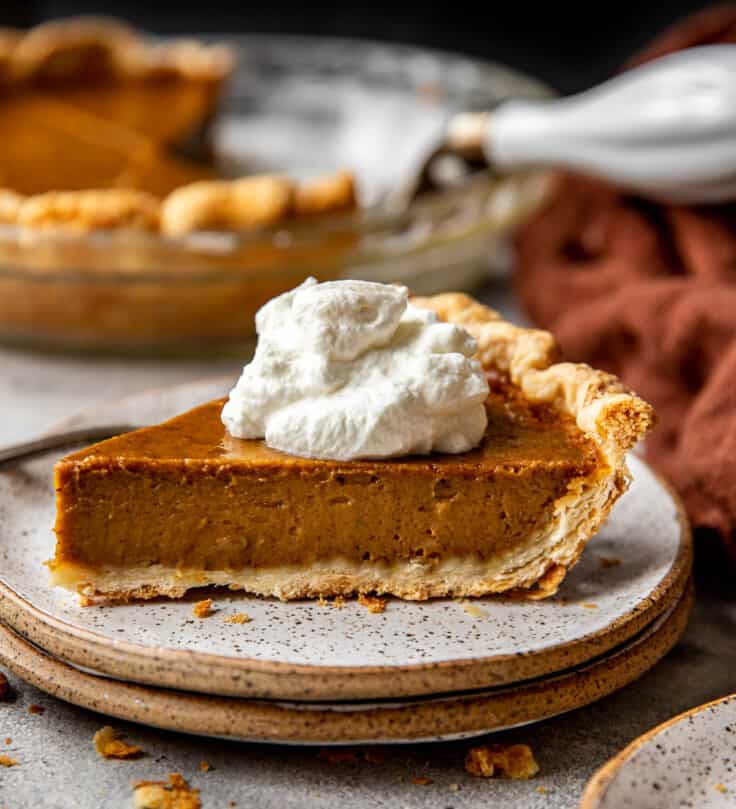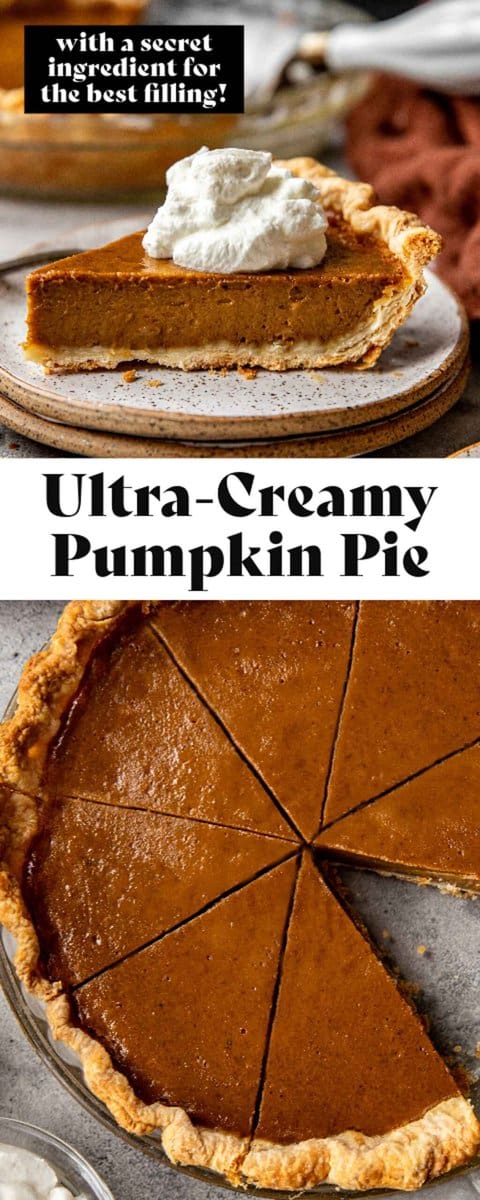This delicious homemade pumpkin pie recipe combines a flaky all-butter crust with a spiced pumpkin filling made with a surprise ingredient that’s key for balancing the warm flavors. This homemade pumpkin pie recipe will have people coming back for seconds because the balance of flavors is *that* good.
You make pumpkin pie once a year, maybe twice if you’re a fanatic, so the stakes are high to make something that’s buttery, spiced and just sweet enough. This pumpkin pie recipe delivers on all of that and then some.
With the addition of a secret ingredient (don’t knock it ‘till you try it) the filling has more balance than any other pumpkin pie recipe out there.
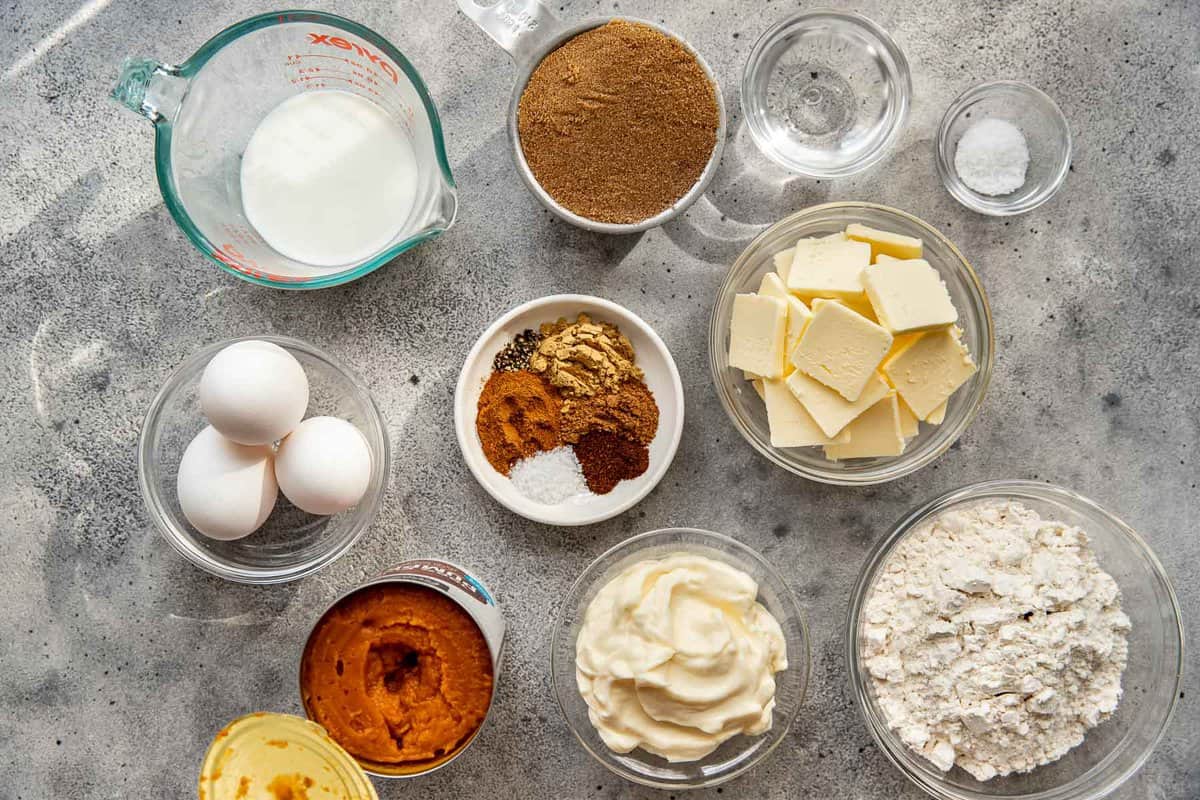
Ingredients for This Recipe
- Flour: this pie crust recipe is simple which makes it perfect for pumpkin pie. All-purpose flour is what you’ll need for this recipe, though if you want to make a whole-wheat pie crust that also works.
- Butter: unsalted butter is the way to go here. Using unsalted butter just gives you more control over the seasoning of the pie.
- Pumpkin: you can use canned or homemade pumpkin puree. You’ll need one (15-ounce) can or 2 cups.
- Dark brown sugar: opt for dark brown sugar instead of light for the most molasses flavor.
- Spices: this pumpkin pie uses a handful of warm spices. Sure, you can use pumpkin pie spice, but we think this mix of spices results in a more nuances and flavorful filling. You’ll need cinnamon, ginger, nutmeg, cloves, kosher salt and black pepper (yes! black pepper!).
- Mayonnaise: OK, don’t knock it before you try it. The addition of mayonnaise to pumpkin pie filling is a game changer (like it is in mayonnaise chocolate cake).
Mayonnaise is just egg, oil and vinegar. It adds a nice creaminess and a bit of tang, which balances out the sweetness and warm spices. No one will know it’s in there, but they will notice the creaminess and the balance of flavor! Use full-fat mayonnaise for the best results. - Eggs: you’ll need three large eggs. It’s important to use eggs labeled as “large.” A large egg, out of the shell, should weigh 50 grams.
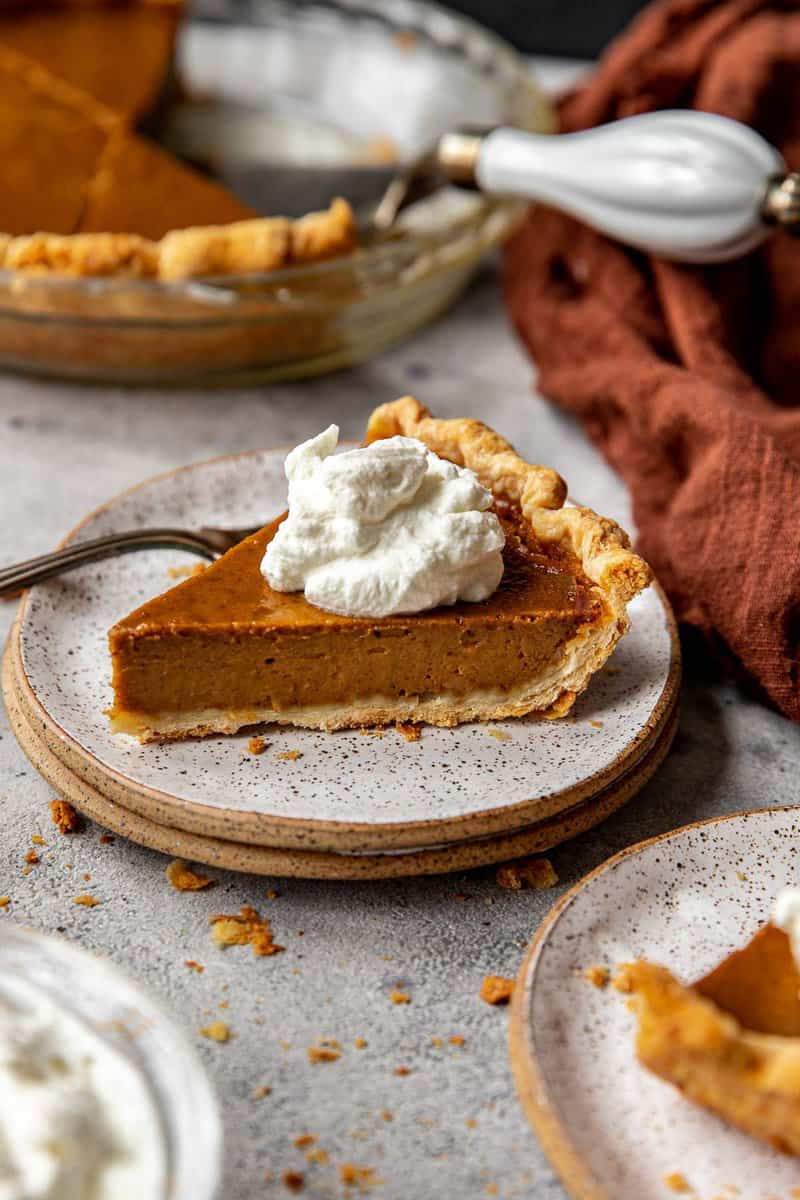
How to Make Pumpkin Pie
Make the Pie Dough
This pie crust uses a food processor to make the process quick and easy. If you don’t have a food processor, you can use a pastry cutter to cut in the butter.
- Start by combining the flour and salt in the food processor. Scatter the butter over top and pulse the mixture until it resembles coarse
- Transfer the flour mixture to a medium bowl and drizzle with a couple tablespoons of water. Then use a rubber spatula to bring the dough together by mixing and pressing with the spatula.
- Form the dough into a disk then wrap it in plastic wrap and refrigerate for about 30 minutes, just to let the butter firm up a bit. (The dough can be refrigerated for up to 3 days.)
- After the dough has chilled, roll it out on a lightly floured surface into a 13-inch circle. Depending on how long the dough chilled, you may need to let it sit out for a bit before it’s warm enough to roll out.
- Fold the dough into quarters (this makes it easier to move to the plate) then unfold in the pie plate.
- Crimp the edges using your fingers.
- Chill the dough-lined pie plate until it’s set, this will take about 20 minutes.
- Prick the dough with a fork, then line the crust with foil and prick through the foil as well. Refrigerate again for 1 hour. (All this chilling might seem annoying, and maybe it is, but it’s key for creating a crisp and flaky pie crust).
- Blind bake the crust at 400ºF on the lowest rack (this ensures the bottom of the crust is cooked through and flaky, not stodgy—important for pumpkin pie and pecan pie) for 15 minutes. If the crust and foil puff up, press it back down with an oven mitt.
- After 15 minutes, remove the foil and continue to bake the crust just until it begins to color, about 10 minutes.
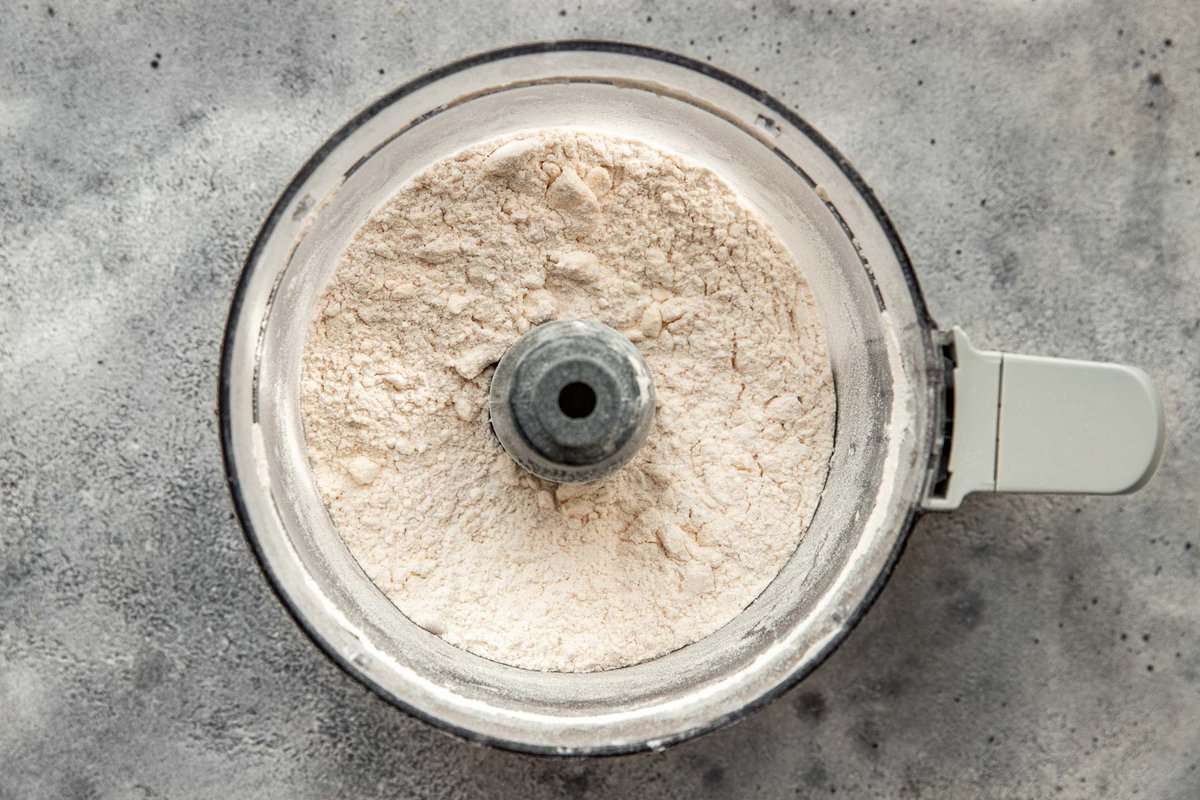
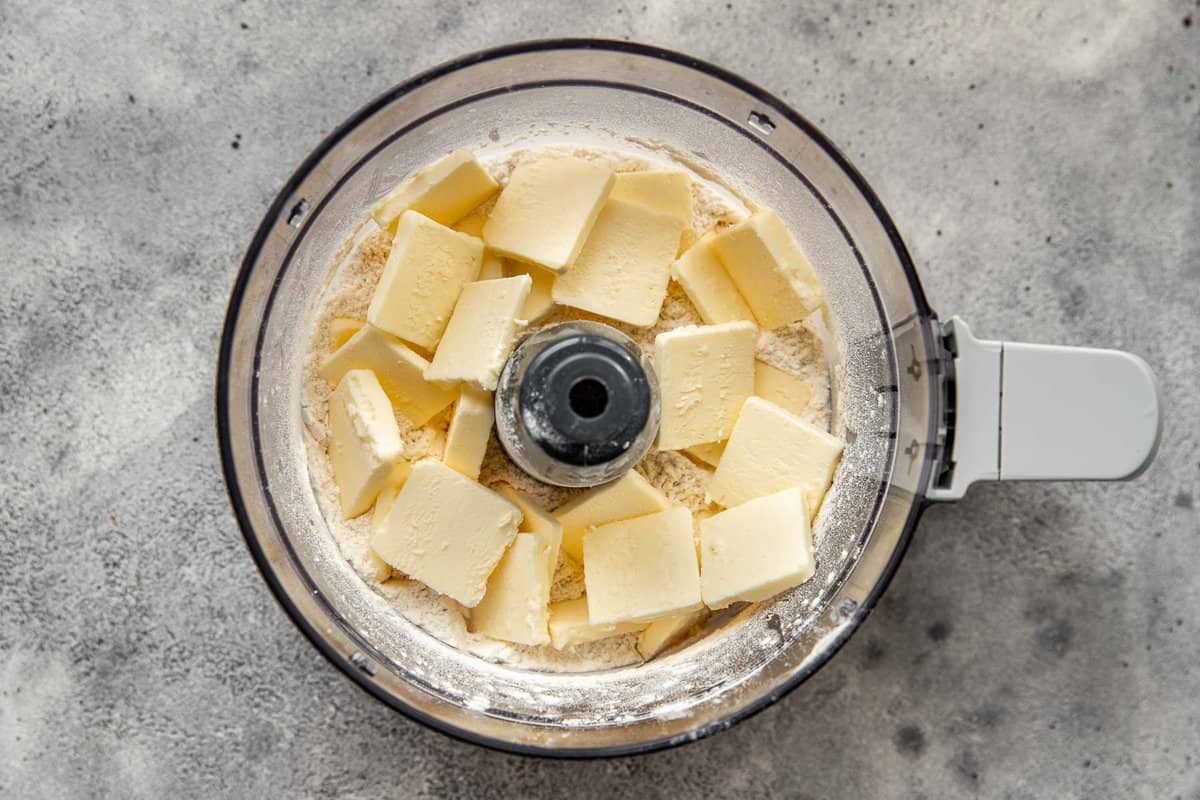
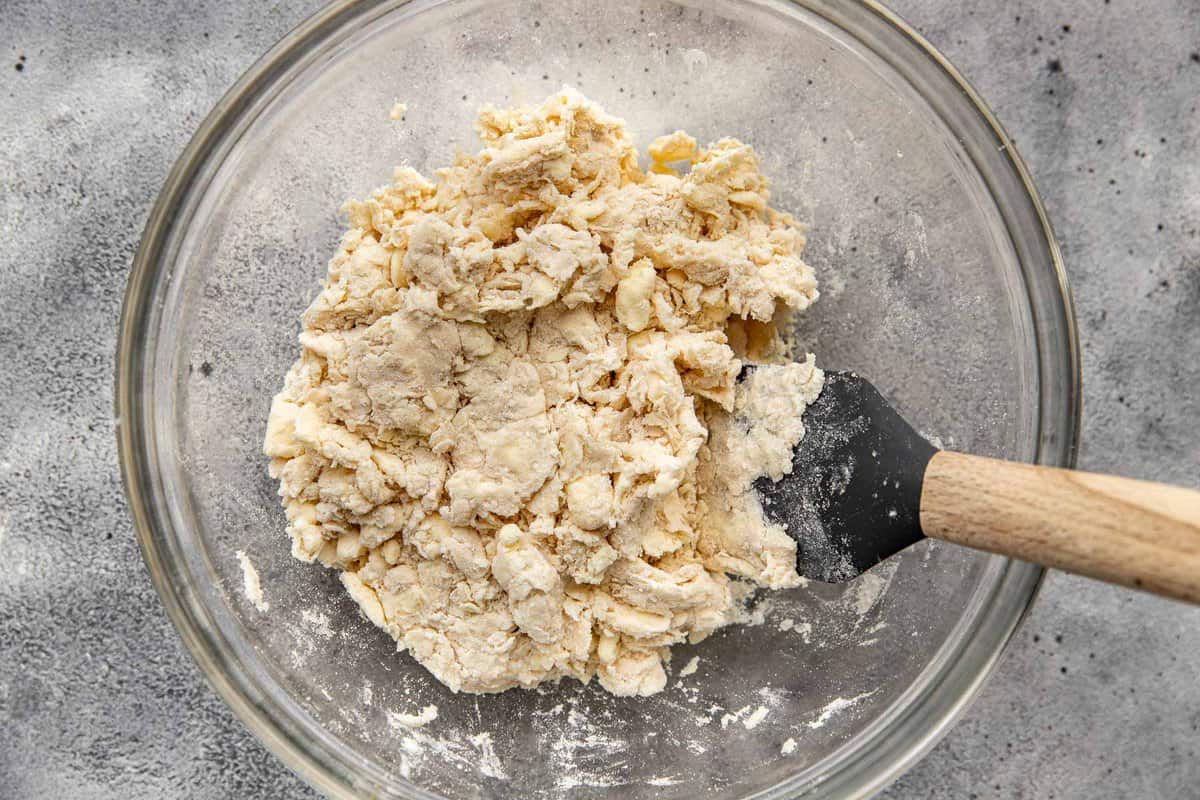
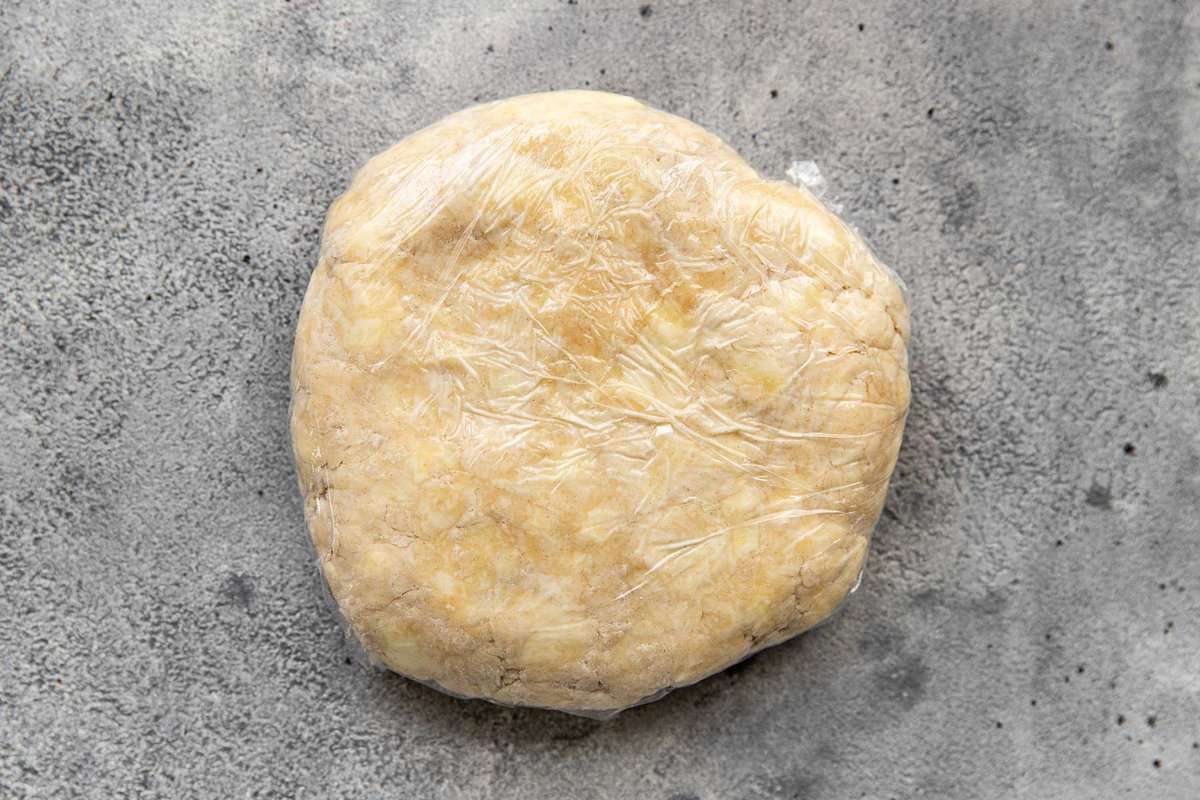
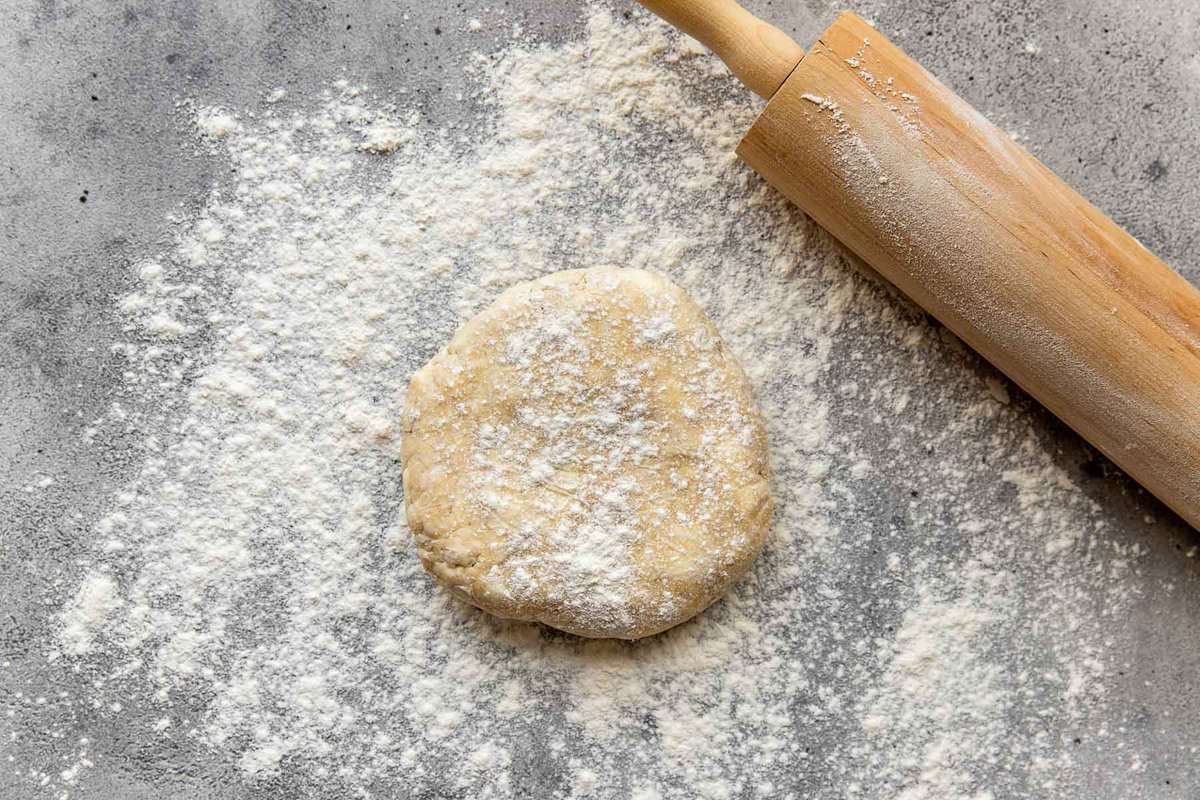
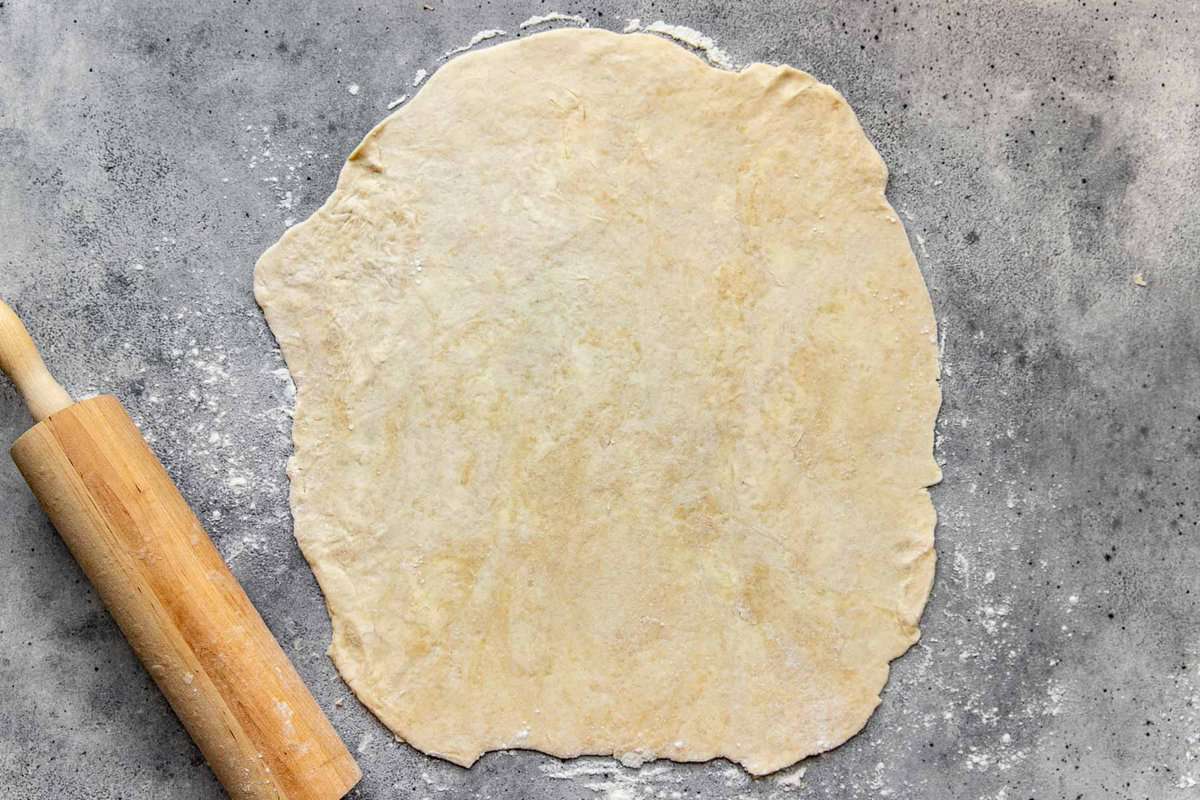
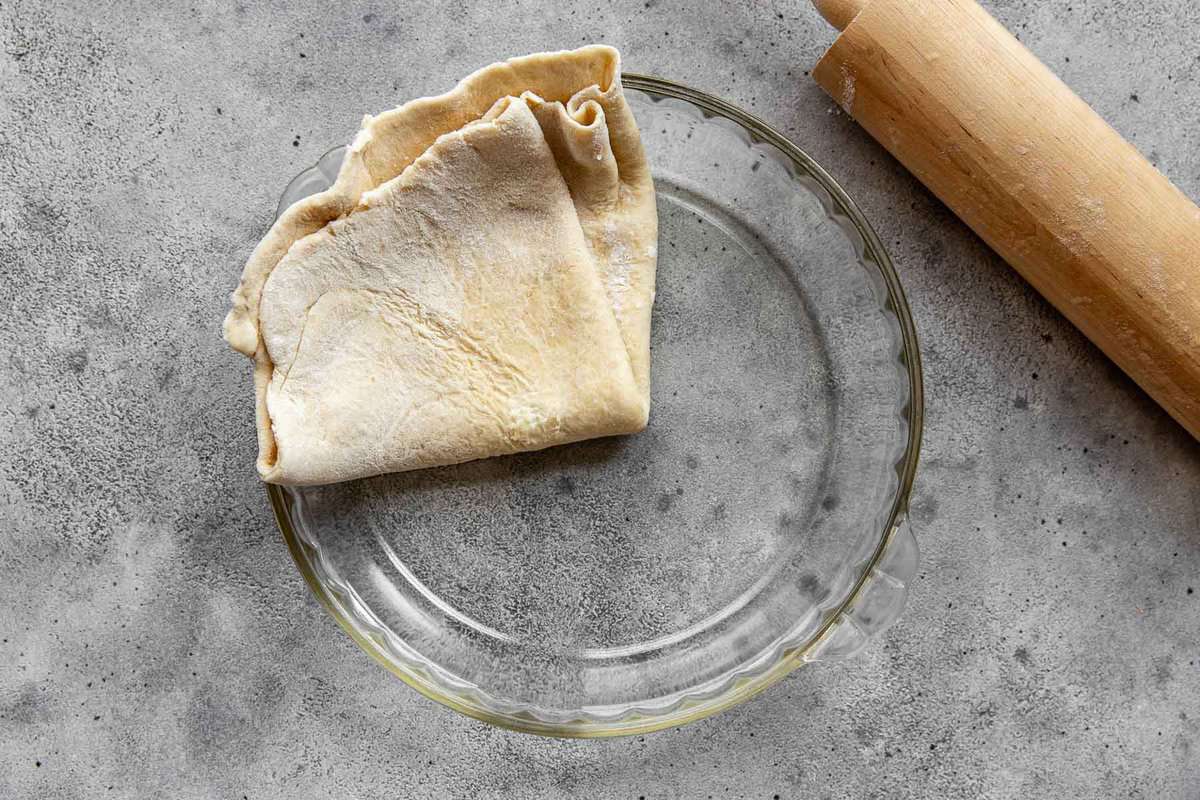
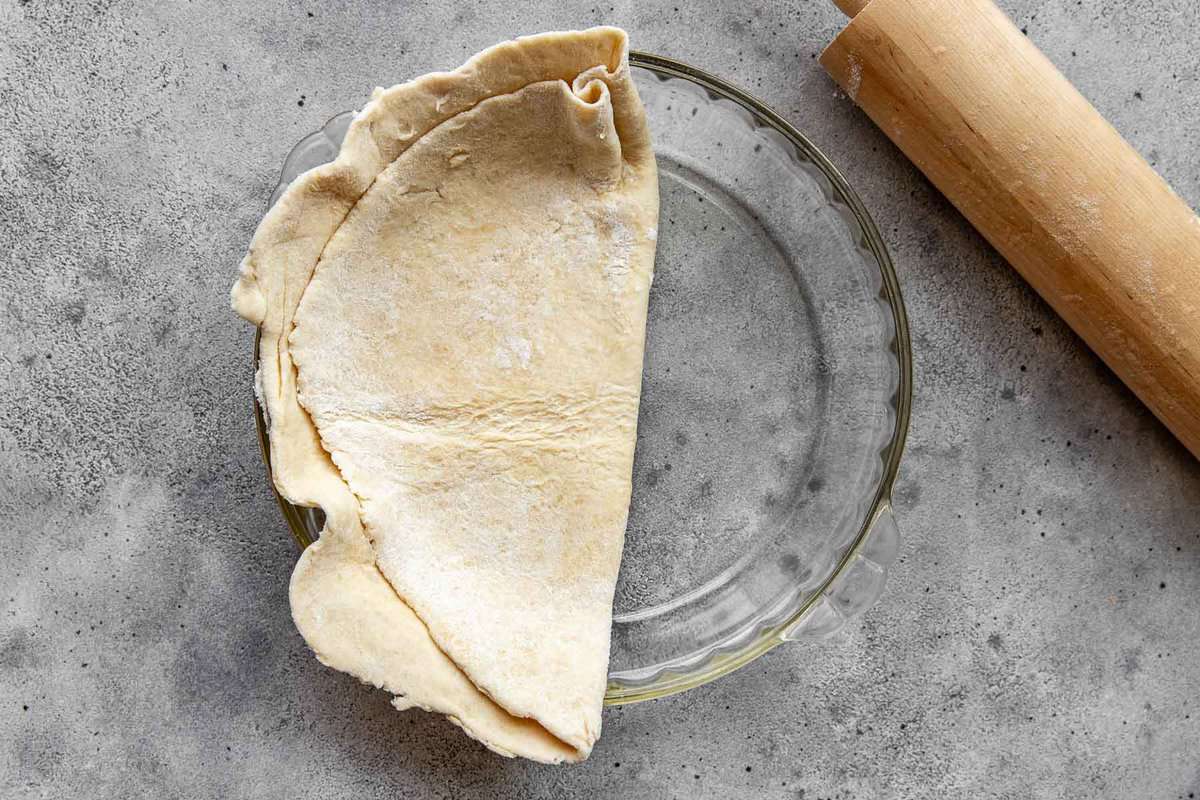
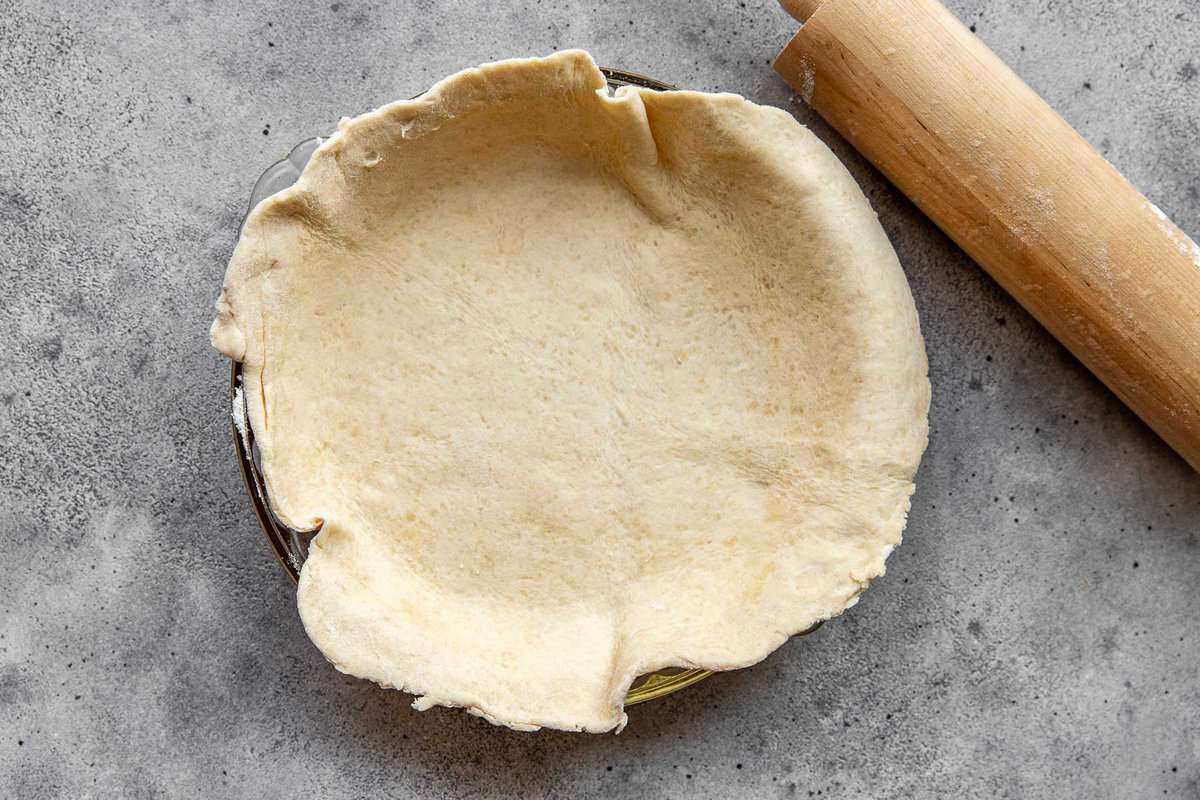
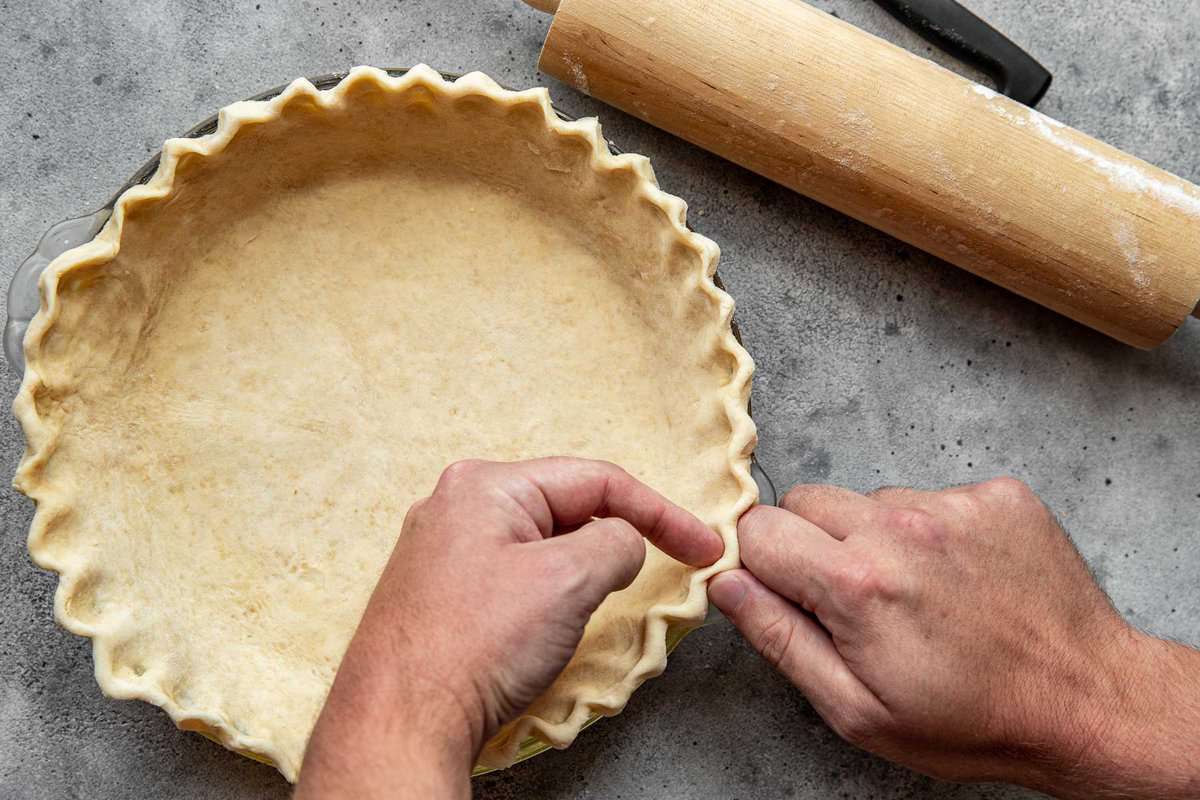
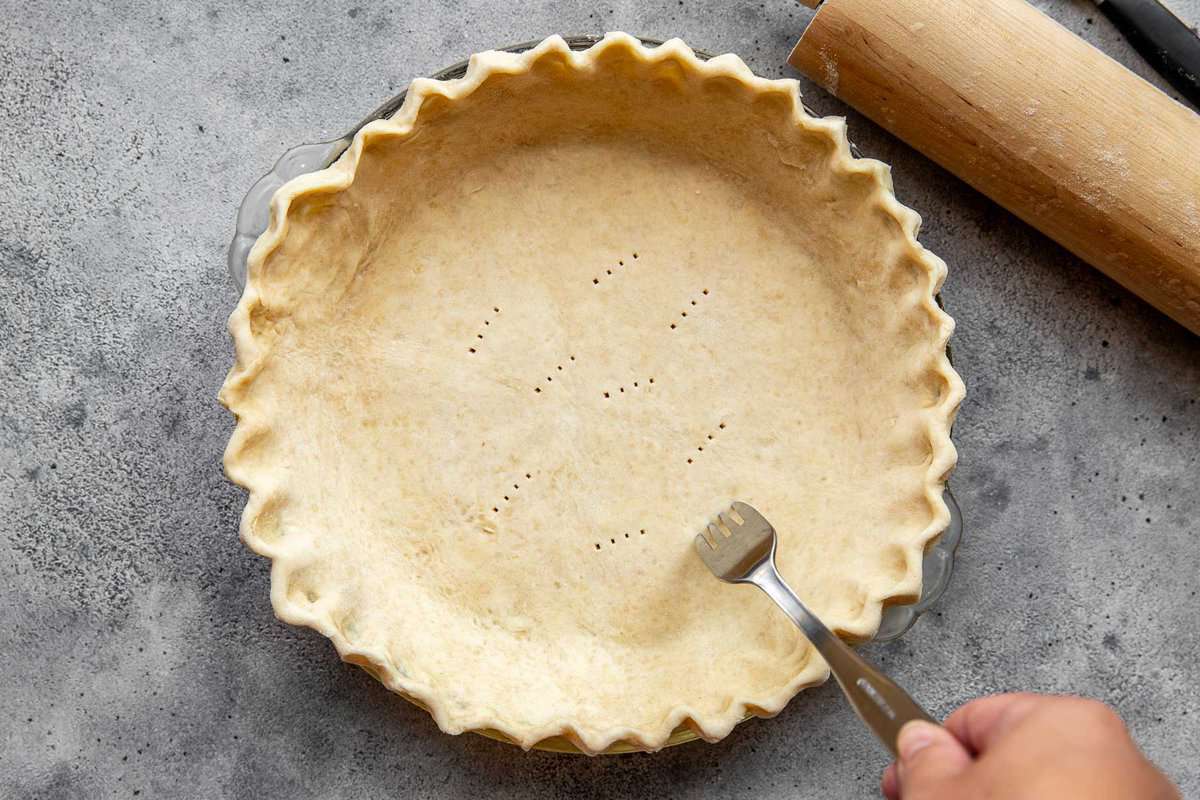
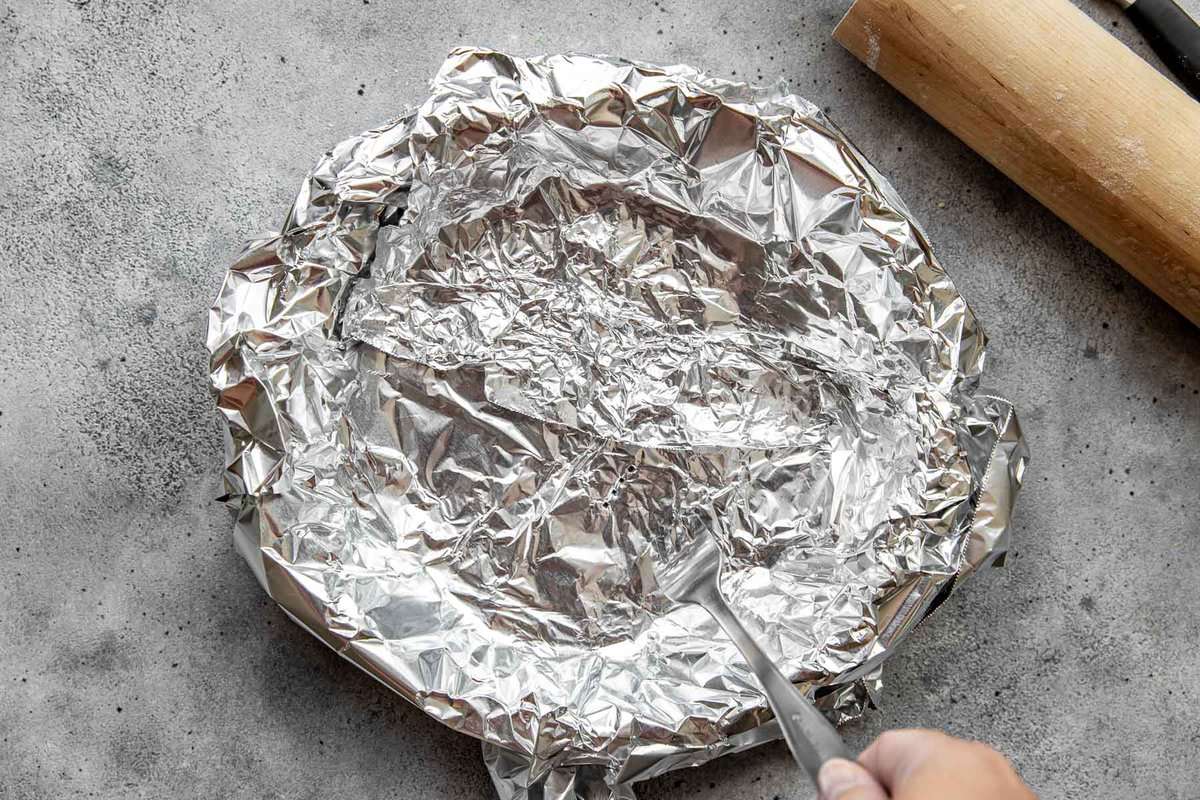
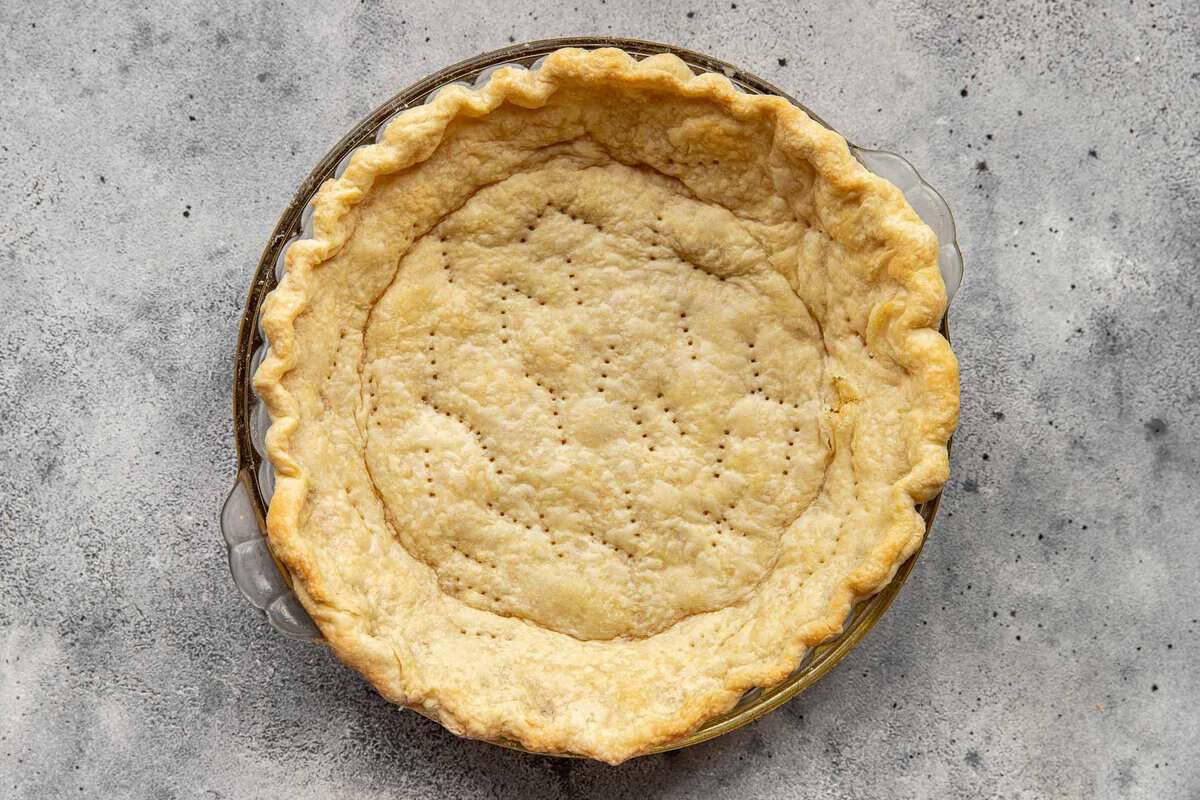
Make the Filling
We’ll also be using a food processor for the filling! If you don’t have a food processor, you can use a blender.
- Combine the pumpkin, brown sugar, and spices in a and blend until smooth.
- Cook the pumpkin mixture in a saucepan until it’s thick and shiny (be careful, the hot sugary mixture will sputter and can burn you).
- Whisk in the mayo and the milk then bring to a low simmer. Keep the filling warm until the pie shell comes out of the oven.
- When ready to fill the shell, add the eggs to the now-empty and blend until they become slightly foamy, this should take just a few seconds. Then, with processor running, slowly stream in the warm pumpkin mixture.
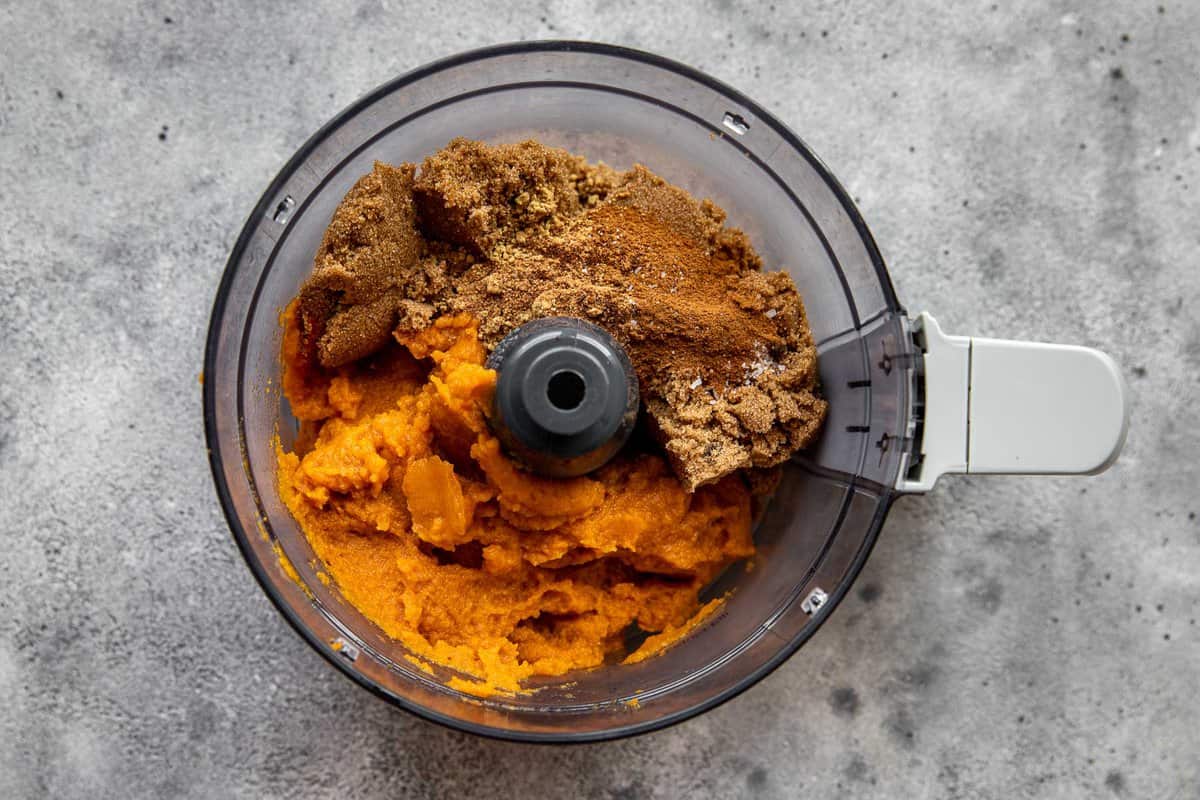
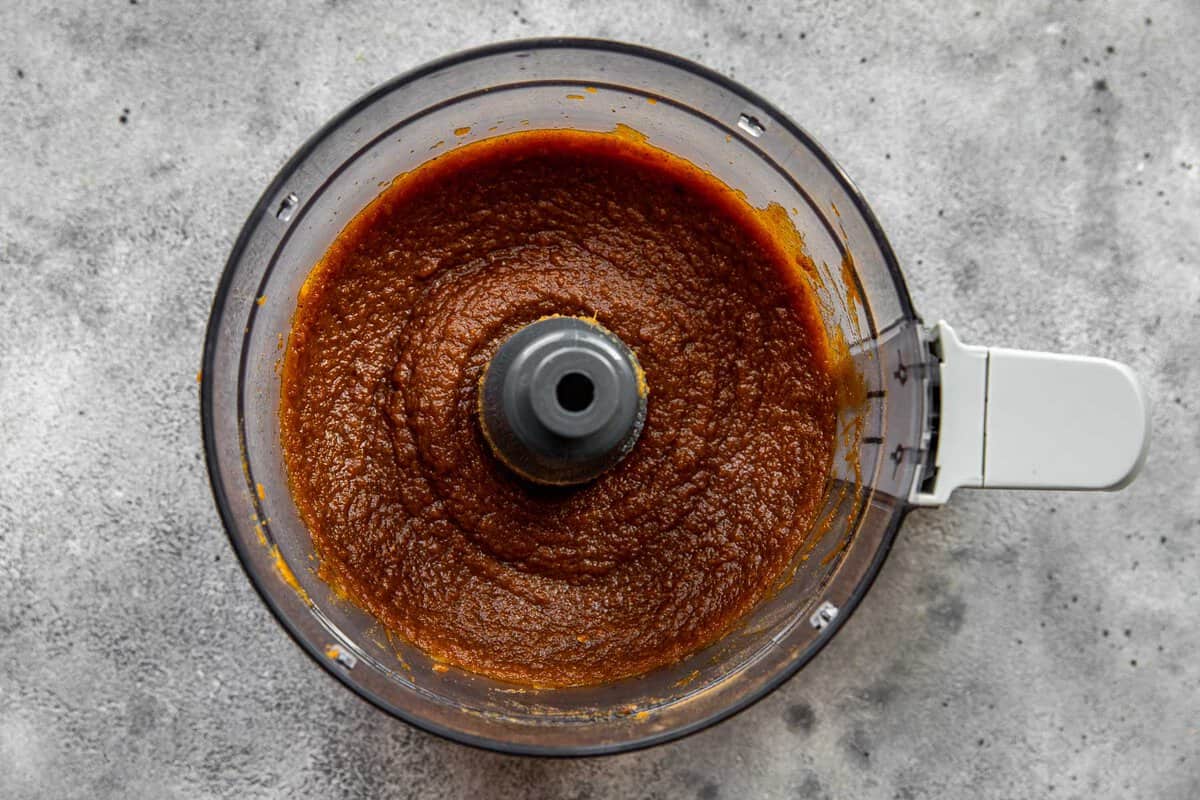
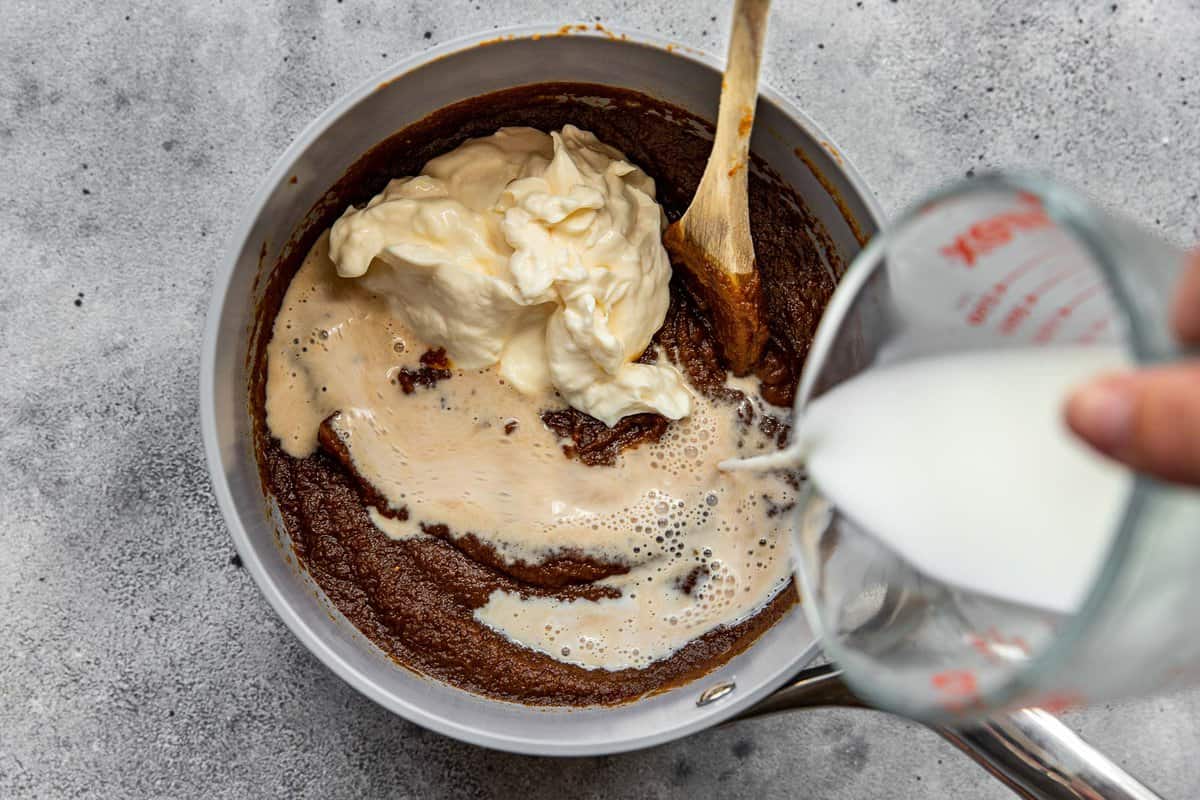
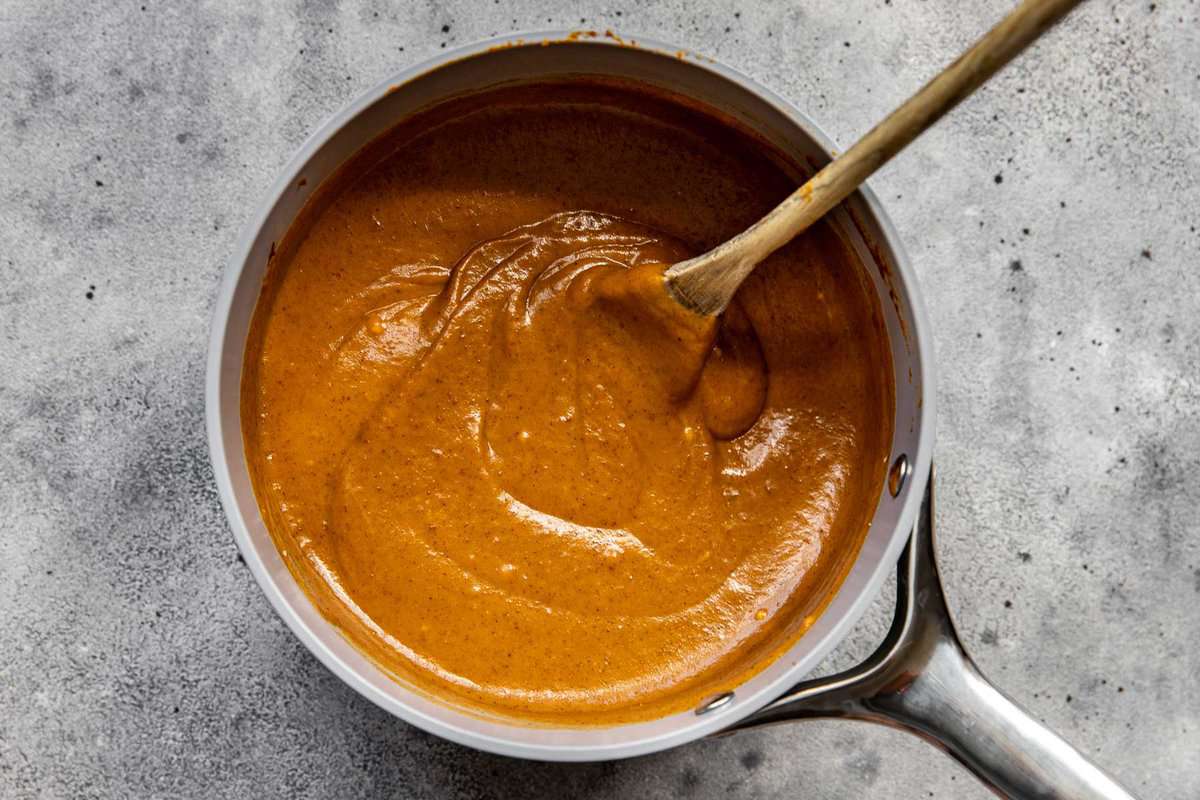
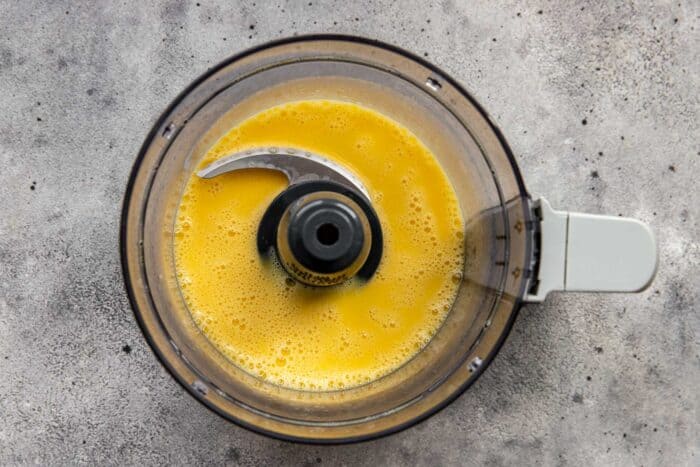
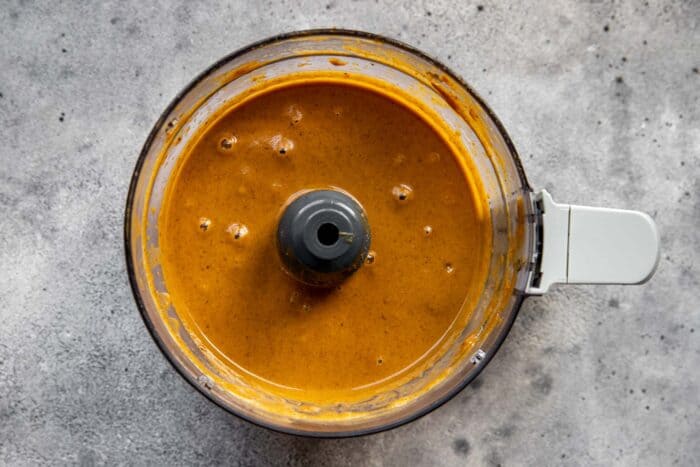
Bake
- Pour the warm filling into the hot pie shell and transfer to the oven. If you have excess filling, hold onto it and add it to the pie after the first 5 minutes of baking.
- You’ll know the pie is done when the filling is puffed up, looks dry on top and the center jiggles slightly when lightly shaken.
- Let the pie cool completely before slicing and serving with lightly sweetened whipped cream.
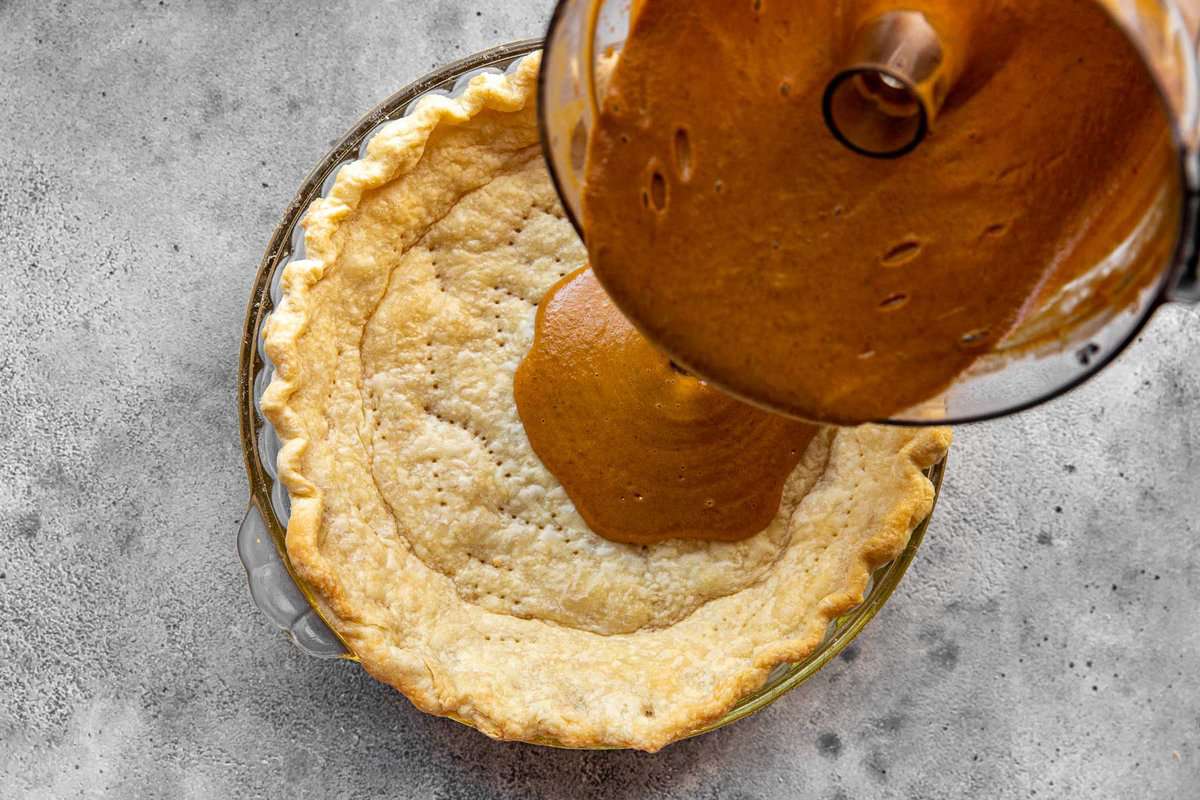
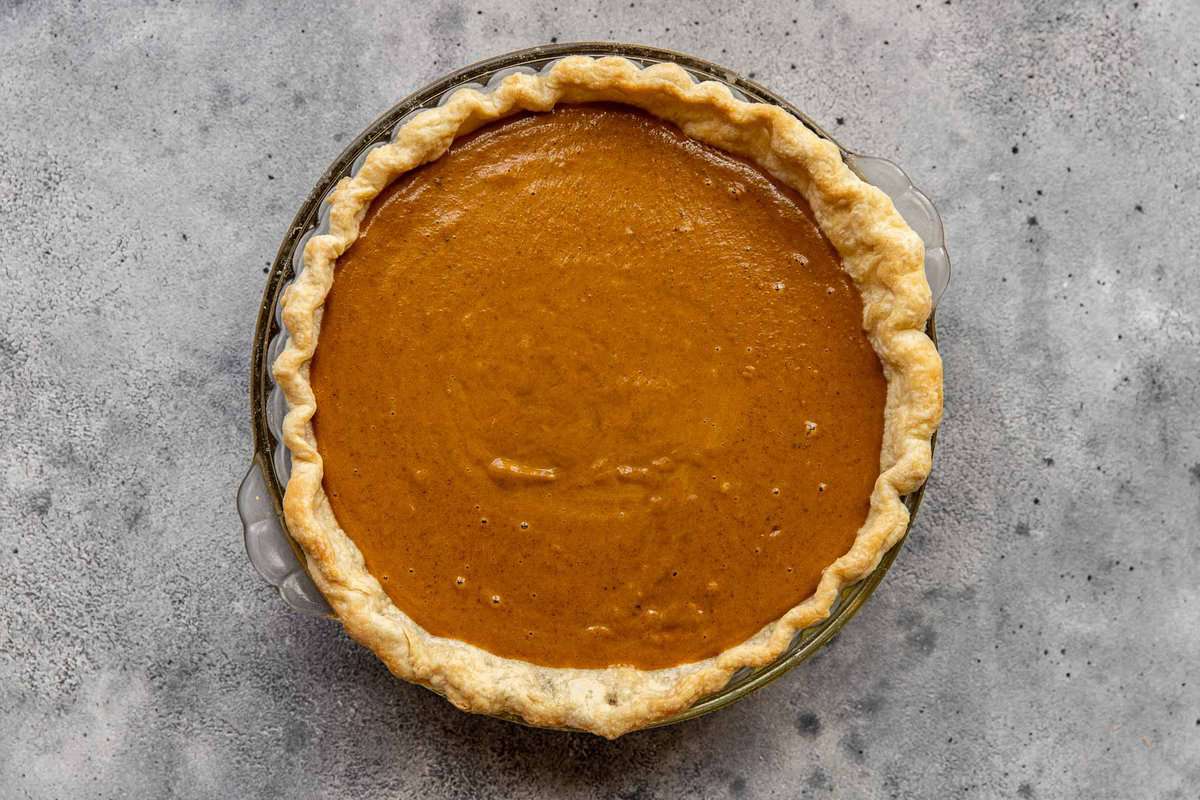
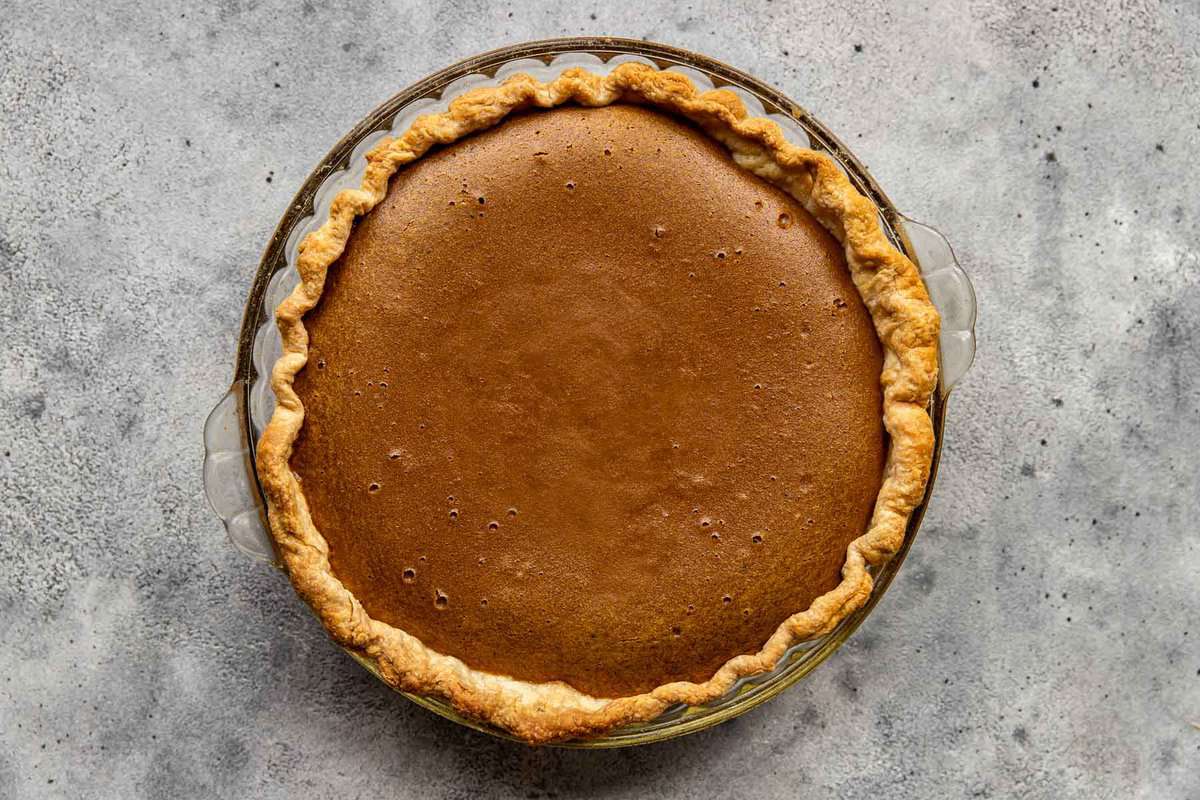
Pro Tips for Making Pumpkin Pie
- To safely transfer the pie crust to the pie plate you can either roll it around your rolling pin and unroll it over the plate, or you can fold the dough round into quarters and unfold it into the pie plate.
- Blind baking is common for pumpkin pie. And while it helps set the crust, it still creates a pretty dense and stodgy bottom.
To create a crisp, flaky crust throughout, line the chilled dough with foil and blind bake the crust without pie weights. This allows the specks of butter melt and steam, creating flaky layers of crust. - If you have excess filling, hold onto it and add it to the pie after the first 5 minutes of baking. Once the pie is in the oven and on the rack, it’s easier to add more filling without sloshing it around and spitting it out of the crust.
Letting the pie bake for a few minutes before adding more filling allows the filling to set slightly so the filling doesn’t expand over the crust.
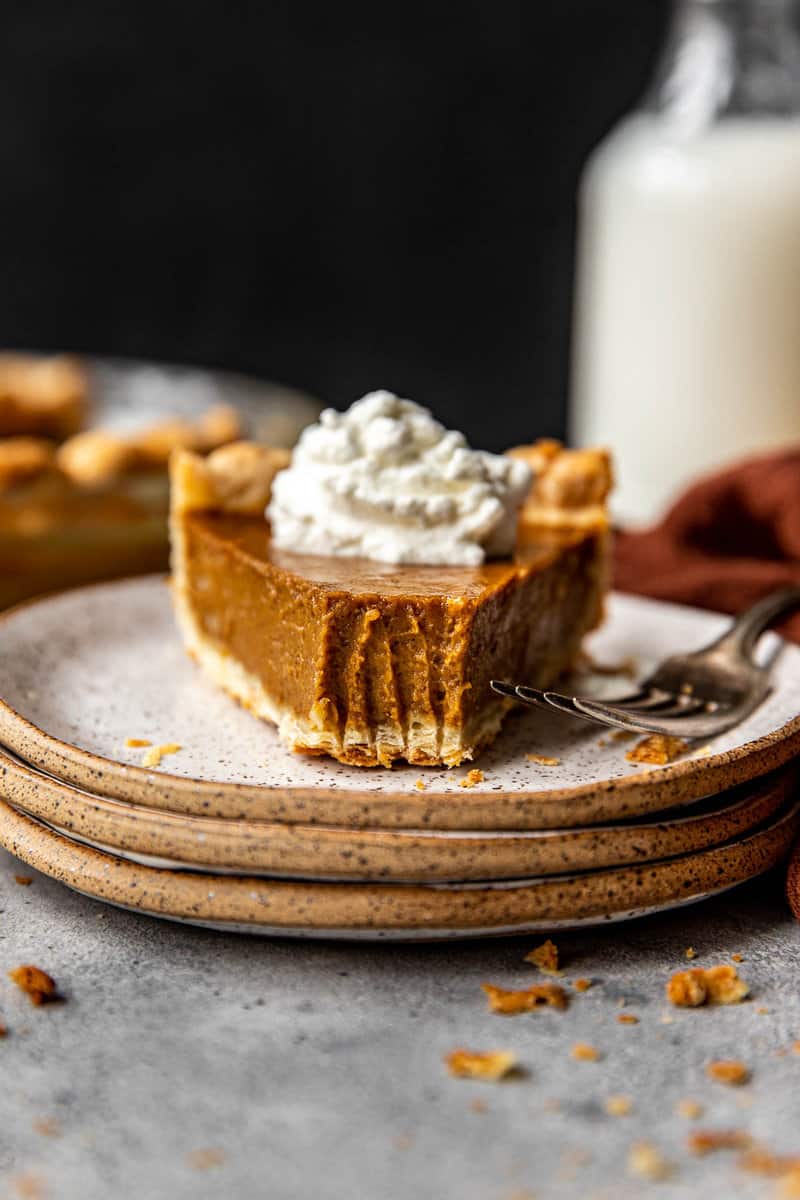
Secret Ingredient
Our secret ingredient is such a curveball, we think it deserves a bit more background. Most pumpkin pies are made with evaporated milk or cream. Instead of either of those, our filling uses mayonnaise and milk.
The addition of mayonnaise makes the filling creamier for two reasons. One, it’s just creamier and thicker than cream or condensed milk. And two, it retains its creaminess more than any kind of dairy during the baking process because it’s made with oil (100% fat) and eggs (fat and structure).
Use a full-fat mayonnaise such as Hellman’s or Sir Kensington’s. Do not use Miracle Whip.
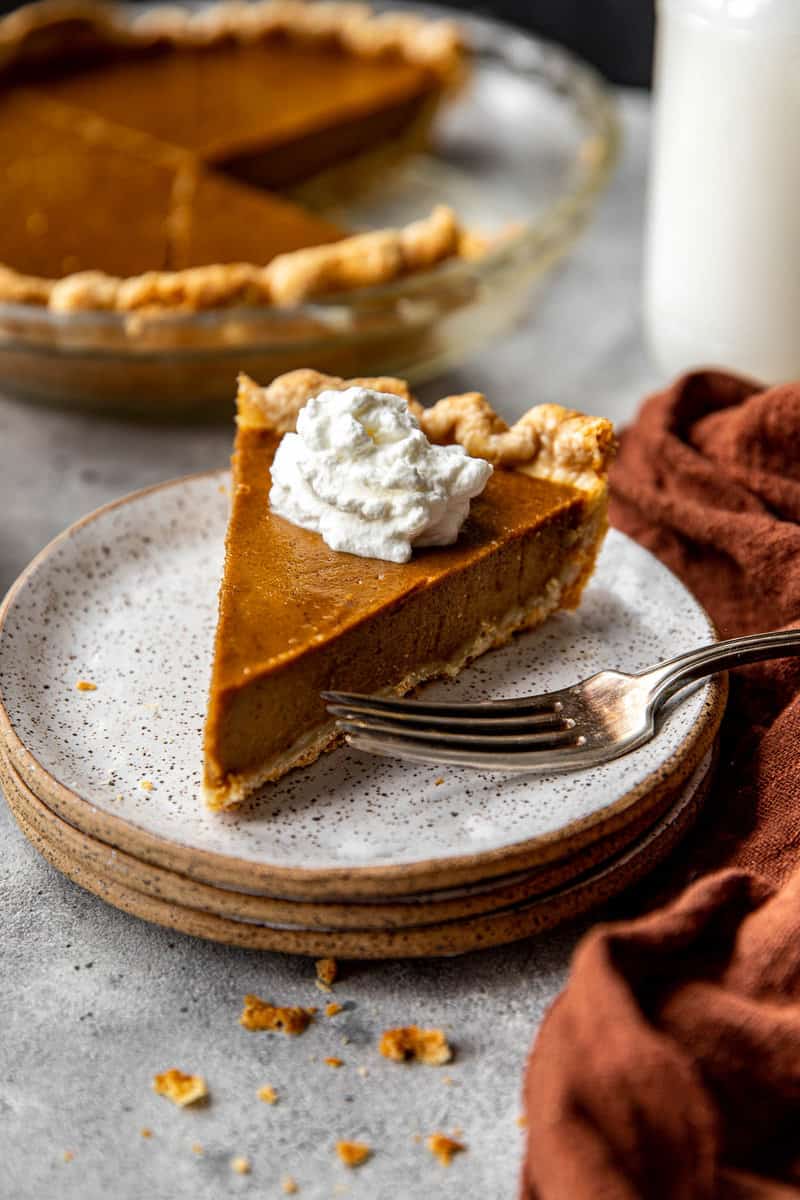
FAQs
There are two reasons a pumpkin pie will crack. One, it was overbaked. And two, it was cooled too quickly. So for starters, keep an eye on the pie and remove it from the oven when it’s puffed, the filling looks dry, and the center jiggles slightly when gently shaken.
And secondly, let the pie cool completely at room temperature on a wire rack. If you try to rush the cooling process by popping it in the oven or setting it outside in the cold winter weather, you will likely end up with a cracked filling.
The beads of moisture on the surface of the pie filling is from the filling weeping. This usually means the pie was overbaked. Still delicious and still edible, it was just ovebaked and thus the filling is phishing out excess moisture.
Yes, the pie will continue to cool a little bit when it’s removed from the oven. But it’s also like caramel—as it cools it will set up.
Like cracking, this is a response to overbaking.
You’ll know the pie is done when the edges of the filling are set, the filling is puffed, the surface looks dry and the filling slightly juggles in the enter when gently shaken.
Yes, you can freeze pumpkin pie! Once the pie has cooled completely, wrap it tightly in plastic, and place it in a large resealable freezer bag and place it in the freezer. When you’re ready to serve, thaw the pie in the refrigerator overnight.
Absolutely. We prefer using individual spices because it makes for a more nuanced flavor. If you want to use pumpkin pie spice, use scant 2 tablespoons.
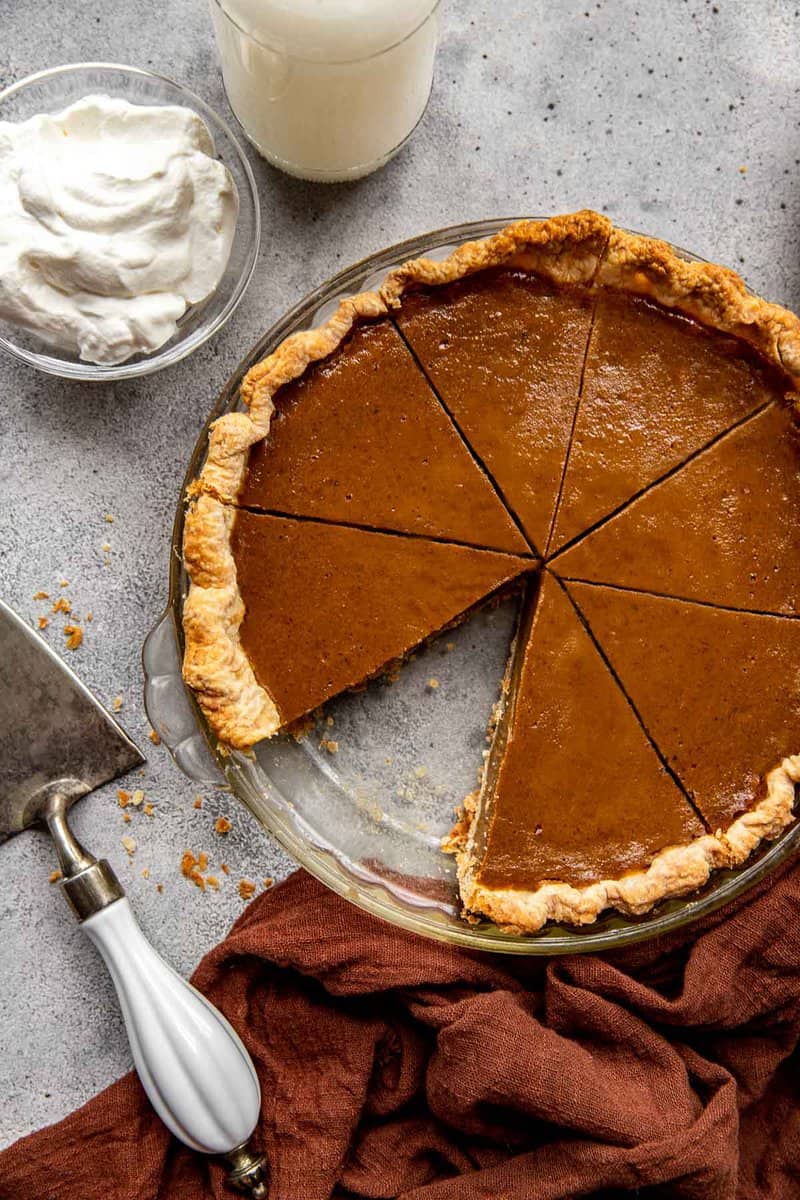
Homemade Pumpkin Pie
Description
Ingredients
Pie Crust
- 1 ¼ cups all-purpose flour
- ½ teaspoon Morton kosher salt (or ¾ Diamond Crystal)
- 10 tablespoons unsalted butter, chilled and cut into 1/4-inch pats
- 3 –6 tablespoons ice water
Filling
- 1 (15-ounce) can pumpkin purée (about 2 cups) (not pumpkin pie filling)
- 1 cup packed dark brown sugar
- 2 teaspoons ground cinnamon
- 2 teaspoons ground ginger
- 1 teaspoon fresh grated nutmeg
- ¼ teaspoon ground cloves
- ½ teaspoon Morton kosher salt (or ¾ Diamond Crystal)
- ⅛ teaspoon black pepper
- ¾ cup mayonnaise
- ⅓ cup whole milk
- 3 large eggs
Instructions
Pie Crust
- Process flour and salt in a food processor. Scatter butter over flour; pulse until mixture resembles cornmeal, 7–12 pulses. Transfer mixture to a medium bowl.
- Drizzle 3 tablespoons of water over flour mixture. Using a rubber spatula, mix the dough, pressing the dough together. If the dough doesn’t come together add water by tablespoon just until dough comes together.
- Form dough into a ball; wrap in plastic and flatten into a 4-inch disk. Refrigerate dough at least 30 minutes.
- Generously flour a work surface. Unwrap dough and lightly dust with flour. If needed, let dough stand at room temperature until it gives slightly when pressed; 5–10 minutes. Roll dough out into an ⅛-inch thick 13-inch round.
- Fold dough in quarters; place corner in center of a 9-inch pie plate. Gently unfold dough to cover plate, using one hand to pick up edges of dough and an index finger to press dough into corners and up sides. Trim dough overhang to ½-inch then tuck edges under and crimp using thumbs and pointer fingers.
- Refrigerate dough-lined pie plate for 20 minutes. Prick bottom, sides and corners with a fork. Line dough with a piece of foil, pressing it to line the corners, sides, and cover the rim. Prick foil about a dozen places with a fork. Refrigerate shell for 1 hour.
- Heat oven to 400ºF with rack set in lowest position. Bake shell 15 minutes, pressing down on foil with an oven mitt to flatten if it puffs. Remove foil and continue to bake shell just until it begins to color, about 10 minutes.
Filling
- Process pumpkin, brown sugar, ginger, cinnamon, nutmeg, cloves, salt and pepper in a food processor for 1 minute. Transfer pumpkin mixture to a saucepan over medium-high heat and bring to a sputtering simmer, cook, stirring constantly, until thick and shiny, about 5 minutes.
- Whisk mayo and milk into pumpkin and bring to a low simmer; keep warm until the pie shell comes out of the oven.
- Process eggs in food processor until foamy, about 5 seconds. With processor running, slowly stream in half of the warm pumpkin mixture. Scrape down sides of bowl as needed, add remaining pumpkin and process 30 seconds more.
- Immediately pour warm filling into hot pie shell. (Pour any excess filling into pie after 5 minutes of baking.) Bake pie until filling is puffed, dry-looking, and center slightly wiggles when gently shaken, about 25 minutes. Transfer pie to a wire rack and cool completely.
- Serve with whipped cream.
Video
Notes
Nutrition
